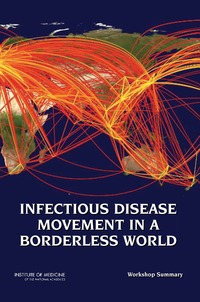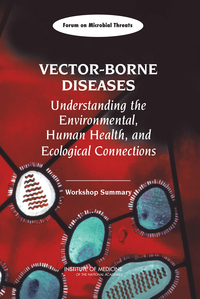As the Ebola epidemic continues, the space in treatment centers and the number of medical personnel is severely outpaced by the number of patients infected with the disease. According to the World Health Organization, “Transmission of the Ebola virus in Liberia is already intense and the number of new cases is increasing exponentially.” The African Union promised last Monday to send at least 100 people to Liberia, Sierra Leone and Guinea for a six-month medical support mission. The United States and the United Kingdom will begin providing logistical and operational support. As of this writing, the epidemic has killed at least 2,100 people in five West African countries.

What do we know about global readiness and capacity for surveillance, detection, and response to emerging microbial threats to plant, animal, and human health? To get a scientific perspective, we asked Dr. Eileen Choffnes, with the Institute of Medicine’s (IOM) Board on Global Health, for her thoughts.
“The 2003 IOM report, Microbial Threats to Health, identified changing ecosystems; economic development and land use; climate and weather; and international travel and commerce as ecological and environmental factors that can influence the emergence and spread of infectious diseases. The last several decades have provided ample evidence of the impact of these factors—individually and synergistically—on the ecology of microbes, vectors, and animal reservoirs; the transmissibility of microbes; and the exposure pathways between microorganisms and new hosts. And, despite the International Health Regulations of 2005, the current Ebola epidemic in West Africa has exposed gaping holes in the ability to tackle outbreaks in an increasingly interconnected world, where diseases can quickly spread from remote villages to cities housing millions of people.”
Reports from the IOM’s Forum on Microbial Threats explore the scientific and policy implications of infectious disease emergence, establishment, and spread. All are free to download.
ISBN 978-0-309-30499-3
The twentieth century witnessed an era of unprecedented, large-scale, anthropogenic changes to the natural environment. Understanding how environmental factors directly and indirectly affect the emergence and spread of infectious disease has …
ISBN 978-0-309-29062-3
Individually and collectively, resident microbes play important roles in host health and survival. Shaping and shaped by their host environments, these microorganisms form intricate communities that are in a state of dynamic equilibrium. This …
ISBN 978-0-309-26432-7
Beginning with the germ theory of disease in the 19th century and extending through most of the 20th century, microbes were believed to live their lives as solitary, unicellular, disease-causing organisms . This perception stemmed from the focus …
ISBN 978-0-309-18634-6
Neglected tropical diseases (NTDs) afflict more than 1.4 billion people, many of whom live on less than $1.25 a day. While there are effective ways to manage NTDs, policy-makers and funders have only recently begun to recognize the economic and …
ISBN 978-0-309-14447-6
Modern transportation allows people, animals, and plants–and the pathogens they carry–to travel more easily than ever before. The ease and speed of travel, tourism, and international trade connect once-remote areas with one another, eliminating …
ISBN 978-0-309-13872-7
As the human population grows–tripling in the past century while, simultaneously, quadrupling its demand for water–Earth’s finite freshwater supplies are increasingly strained, and also increasingly contaminated by domestic, agricultural, and …
ISBN 978-0-309-10897-3
Vector-borne infectious diseases, such as malaria, dengue fever, yellow fever, and plague, cause a significant fraction of the global infectious disease burden; indeed, nearly half of the world’s population is infected with at least one type of …
ISBN 978-0-309-27875-1
Infectious diseases are a global hazard that puts every nation and every person at risk. The recent SARS outbreak is a prime example. Knowing neither geographic nor political borders, often arriving silently and lethally, microbial pathogens …
ISBN 978-0-309-10010-6








